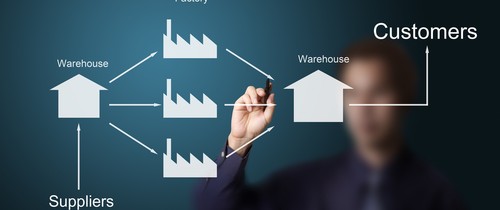Guest Commentary – Three Reasons Distributed Order Management is Not Just for Retailers
by Chuck Fuerst
Your customers want to make purchases however they want, whenever they want, and they expect the same fast service no matter the order channel. That means you need a nimble tool that links your inventory across sales channels to optimize order fulfillment, regardless of how or where the order was placed.
From order creation through processing, distributed order management (DOM) captures orders from all channels and determines the best fulfillment strategy for each one. It considers customer expectations, order origination, inventory placements, shipping costs and other variables.
Most of us think of a DOM as being especially applicable to the retail industry, since they really paved the way for multi-channel growth. But its application is much broader than that. A distributed order management system is relevant to nearly any vertical, including 3PLs, manufacturing and consumer goods.
Faced with increased competition from sites like AmazonSupply.com, manufacturers are setting up an e-commerce channel in an effort to reach new buyers. For example, consider a plumbing supply manufacturer that has traditionally sold through brick and mortar locations and now wants to establish an e-commerce presence.
To maximize order efficiency and provide the best customer experience, they will need to have global visibility to inventory in their warehouses, store fronts, as well as in production. A DOM orchestrates all aspects of this situation, including inventory visibility, sourcing and fulfillment.
Any environment that needs to optimize fulfillment strategies based on inventory position order complexity, should consider a distributed order management system. Here are three reasons a DOM may be helpful to your company:
Increased visibility: As a central orchestration hub, a DOM provides you with increased inventory visibility across all of your plants, facilities and stores. It also provides real-time order status to customers and other parties across all of the seller’s channels. This global view of inventory, sourcing and order status is key to optimizing your supply chain and improving the customer experience.
Prioritize orders: A DOM makes your supply chain work smarter, not harder. It can segment and prioritize orders based on order type, due date, service commitments and other factors. The DOM will then source and allocate inventory to orders based on available or potential inventory.
Streamlined supply chain: A DOM can manage fulfillment from multiple vendors and warehouses to multiple shipping points and drop shipments, as well as collaborate with third party logistics systems. By making intelligent decisions on fulfillment and expanding inventory visibility for you and order visibility for your customers, a DOM streamlines the lifecycle cost of an order across the enterprise.
Companies across industries are implementing distributed order management systems for their uses and processes. Any time an order fulfillment strategy is needed for a complex system involving multiple sources and vendors, a DOM can provide the intelligence and efficiency that helps you stay ahead.
Chuck Fuerst is Director of Product Strategy with MHI member company HighJump Software. You can reach Chuck at 800.328.3271 x1141.





